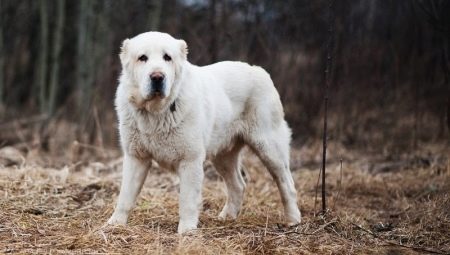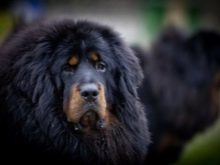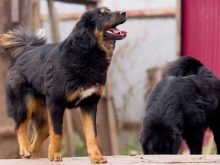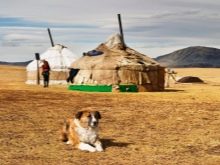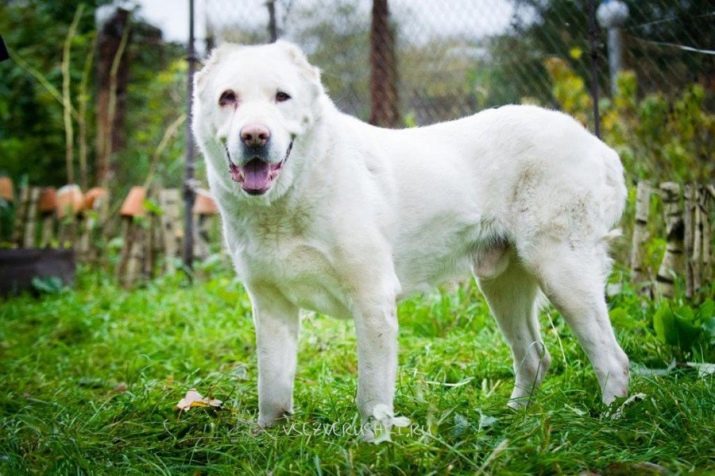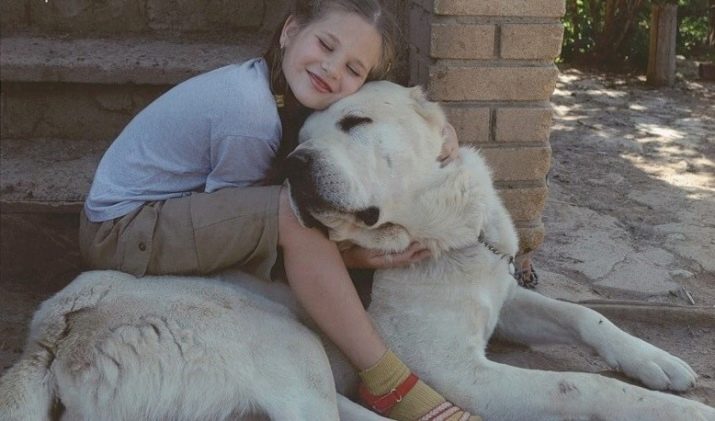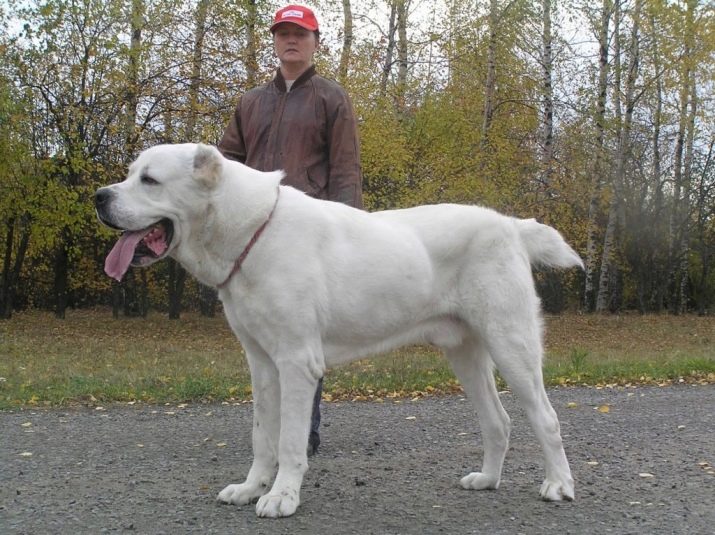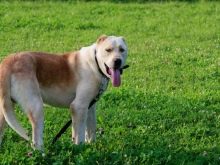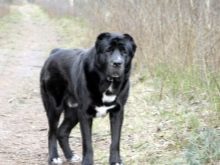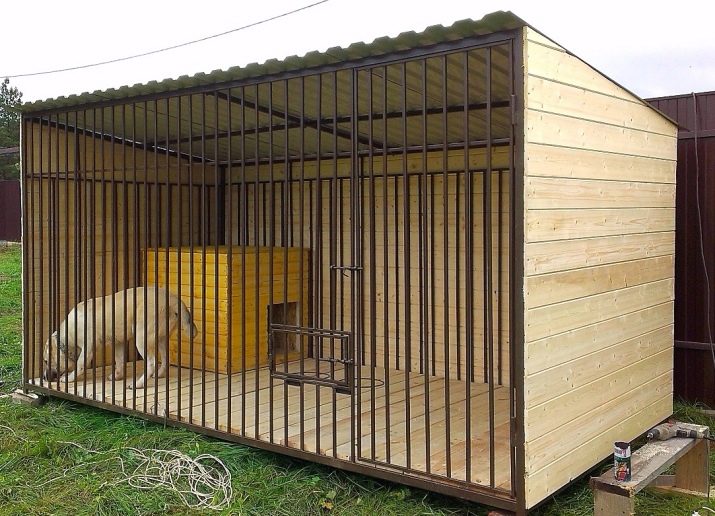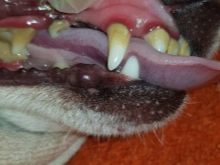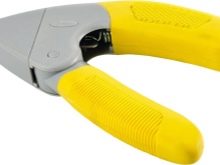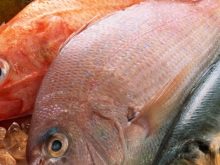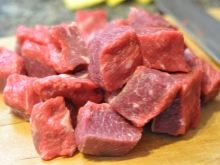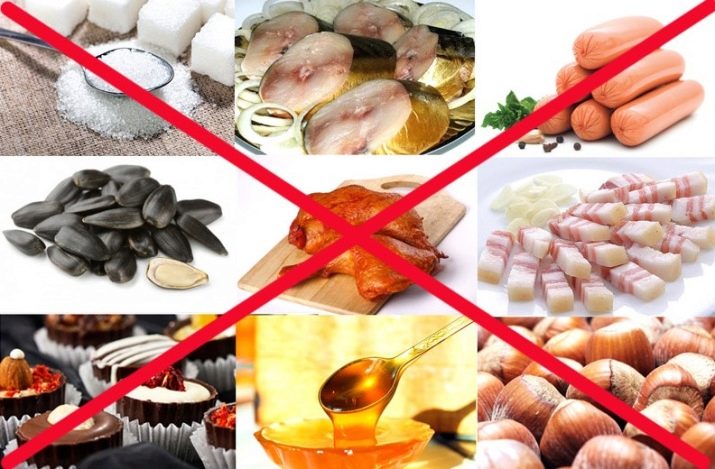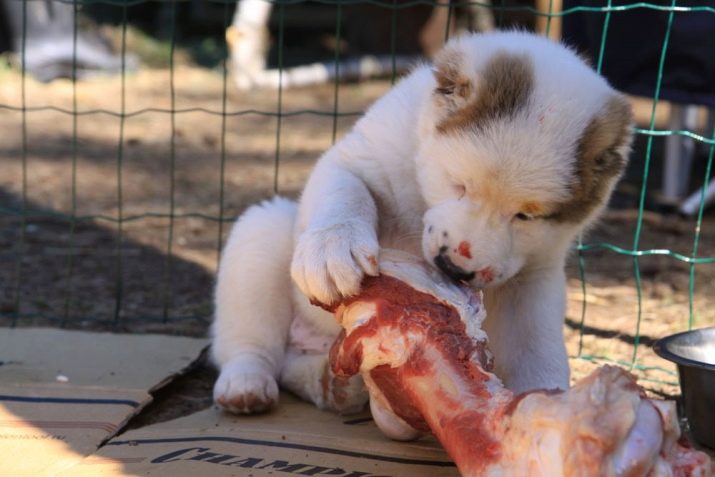Historically, the Alabai is a guard dog. This breed appeared a few thousand years ago and was the result of the crossing of the shepherd dogs of nomads with Mongolian shepherds and Tibetan mastiffs. This breed was used to protect caravans, dwellings and livestock. These intelligent animals have gained a reputation as a good guard, as well as a loyal and devoted friend.
Features
A weighty plus of this breed is a balanced psyche. The result is a calm demeanor and even phlegm. There is no unnecessary fuss in the behavior of such pets, but there is a delayed reaction to various external stimuli. But you can not call these dogs lazy or stupid - they feel any changes in the behavior of the owner. They have a high level of intelligence, and during the training they demonstrate cunning.
The following distinctive features should be attributed to the conditional minuses of the character of the Central Asian Shepherd:
- pride;
- excessive autonomy;
- constant gloominess;
- characteristic distrust.
Alabai will not rush on an enemy person unless absolutely necessary.
When a stranger penetrates into its territory, who does not attack the guard or the household, the dog will drive him into a corner and keep him there until the owner arrives. He treats children affectionately, and quite patiently with other pets.
The main feature that distinguishes alabayev from other service breeds - self-decision making skills. Forcing such an animal to serve, like the same German Shepherd, will fail. Such a four-legged friend will perform the necessary commands only if he understands the need and appropriateness of the requirements. Under the condition of competent education and constant contact with the owner, the dog himself will understand what is permissible and what is not. This is a proud and "thinking" breed.
Characteristics and description of the breed
Officially, this breed was included in the classification in 1993, and in 2010 approved its latest standards. According to their canons, pedigree individuals should have a bite of a scissor-like structure, a large and strong head of large width with cropped ears of small length. Eyes should be very small. The color of their iris can vary from light brown to dark. There should be a flat forehead and big lips. The pigmentation of dark shades on the lips is valued much higher.
Very young puppies, whose age has not yet reached 7 days from the moment of birth, It is desirable to arrest the ears and tail. The latter is cut off not all, without affecting one third, and the ears are cropped in a larger volume, removing almost the entire outer ear.
If there is a need to arrest the tail and ears of an already grown up animal, then consultation with a specialist is necessary before the operation.
Dogs of this known breed grow very tall and large, with a slightly stretched body structure. The neck should be moderately long (without excesses), but rather powerful and strong. The chest at Alabayev is deep, with large open ribs. If the latter has a round or flat shape, then this is considered a disadvantage.
The front legs are wide-boned and straight. The mouth of the alabayev is distinguished by well-developed muscles. Male larger than a bitch in size. It can grow from 70 to 90 cm at the withers. Bitches smaller by 5–20 cm and reach a maximum of 65 cm.
Monochrome color is most often white, as well as black, red or brown.Most often, the main color of the wool is complemented by white spots on the paws, chest and face. Alabai white color look very impressive and resemble a polar bear.
This color is especially in demand among lovers of this breed. As a rule, they have the edges of the lips, nose and eyelids are brown or black. The black-and-black color of the dog's coat is either monochromatic or with slight brown, gray or white tan. Red color can change to: red-red, light-red, bright red, golden-red.
Walking
Walking should start at the age of three months. Such a dog must be trained to a leash and a muzzle while it is smalland the owner can keep and deal with it. Ignoring this rule or being late with schooling, putting on a muzzle will be quite problematic, and walking on a leash will be his master. Walking is desirable to produce away from people and other animals.
Some individuals have a not very desirable trait: dogs smaller than themselves are of no interest to them, and equal to themselves or larger cause them interest - “who is stronger”? One walk should last at least an hour. Their minimum should be two within a day.
Puppies need more frequent walking - 3-4 times a day. To achieve good development of this breed, animals must overcome at least 2 km per day.
Releasing such dogs from a leash is allowed only in muzzles and in areas designated for such purposes, fenced or in a net.
Where to contain?
For keeping such a big dog in an aviary you will have to fulfill the following conditions:
- Aviary is desirable to remove from the house at 10-15 m;
- it is recommended to tamp down a place under the open-air cage, remove all unnecessary items;
- a small bias is necessary so that the water does not stagnate in the aviary;
- it should be located on a dry area, sufficiently (but not unnecessarily) illuminated by sunlight;
- the dimensions of the aviary itself are not limited - the more space the dog has, the better it will feel in it;
- booth should be at least 100x90x80 cm; dimensions of entry - 40x50 cm;
- The best material for making a house for a dog is wood;
- It is recommended to warm the shelter and place it in an area isolated from wind gusts and direct sunlight.
Hygiene procedures
It is required to maintain cleanliness in the area where your pet lives, as well as shake out, vacuum and wash the litter from time to time. Be sure to adhere to the following requirements:
- at least once a month, the booth should be completely washed inside and outside;
- at least 2 times a year, the entire aviary should be completely disinfected with the addition of special detergents, although most dog breeders neglect this rule.
It is worth taking into account several recommendations.
- It is also necessary to clean the pet. Usually this work is carried out 1 time per day before going for a morning walk. The first thing you need to look at the mouth, ears, nose and paw pet. If all is well, then it will remain only to comb a fluffy layer of wool with a frequent comb.
- Ears enough to wipe every 10-15 days. In case of severe contamination, it is allowed to use a cotton swab, which was previously wetted in a 3% hydrogen peroxide solution. If you see a tick on your ears, you should immediately remove it yourself or visit a veterinary clinic.
- If there are wounds or scratches on the pads of the legs, they should also be treated with hydrogen peroxide. If your pet has stained paws in fuel oil or dye composition, you will need to wash off such dirt with a napkin dipped in solvent, and then walk on the paws with oil.
- Claws need to cut special claw cutter, but be careful - do not touch the vessel that goes through the claw. After these actions it is recommended to gently sharpen the irregularities with a special nail file. Overly elongated claws can lead to deformation of the finger or paws.
- A dirty nose should be wiped with a damp cloth.. The nose of a healthy dog should be cold and wet, with no extra secretions (dry and warm, it happens only after the dog has slept).
- Selection, usually appearing in the morning in the corners of the peephole in a healthy individual, is required to be removed with the help of gauze dipped in chamomile broth. It is undesirable to use boric acid solution or tea bag for such purposes.
- To clean the dog's teeth will have 2 times a month. For these activities, it is better to take a special brush. It is allowed to use a cotton swab, but the latter causes discomfort to anyone who tries to rub them on their teeth. To teach this procedure is necessary from a young age. Instead of a special paste, baking soda or chalk mixed with a small amount of citric acid is allowed for cleaning.
Feeding
An adult dog should consume a lot of protein and croup. In the diet should be a variety. The same porridge quickly bother the dog. The following products are useful and necessary for a dog:
- raw meat products (beef or mutton);
- chicken and turkey (boneless meat only);
- low fat marine fish;
- various cereals - buckwheat, rice, oat;
- eggs of chickens.
It is forbidden to give the following products:
- fatty pork or lamb;
- any sweets, muffins, white bread;
- beet;
- bow;
- citrus and exotic fruits;
- sorrel;
- legumes;
- any seasoning and flavorings;
- salted, pickled, smoked, canned;
- tubular, especially boiled bones.
It is necessary to observe the following regime in eating dogs
- puppies up to three months old are fed 6 times a day;
- after three months - 5 times a day.
- after four months - 4 times;
- from six months to a year - no more than three times a day;
- Adult pets need to be fed 2 times a day 15-20 minutes after the walk.
On the features of the breed, see the video below.
